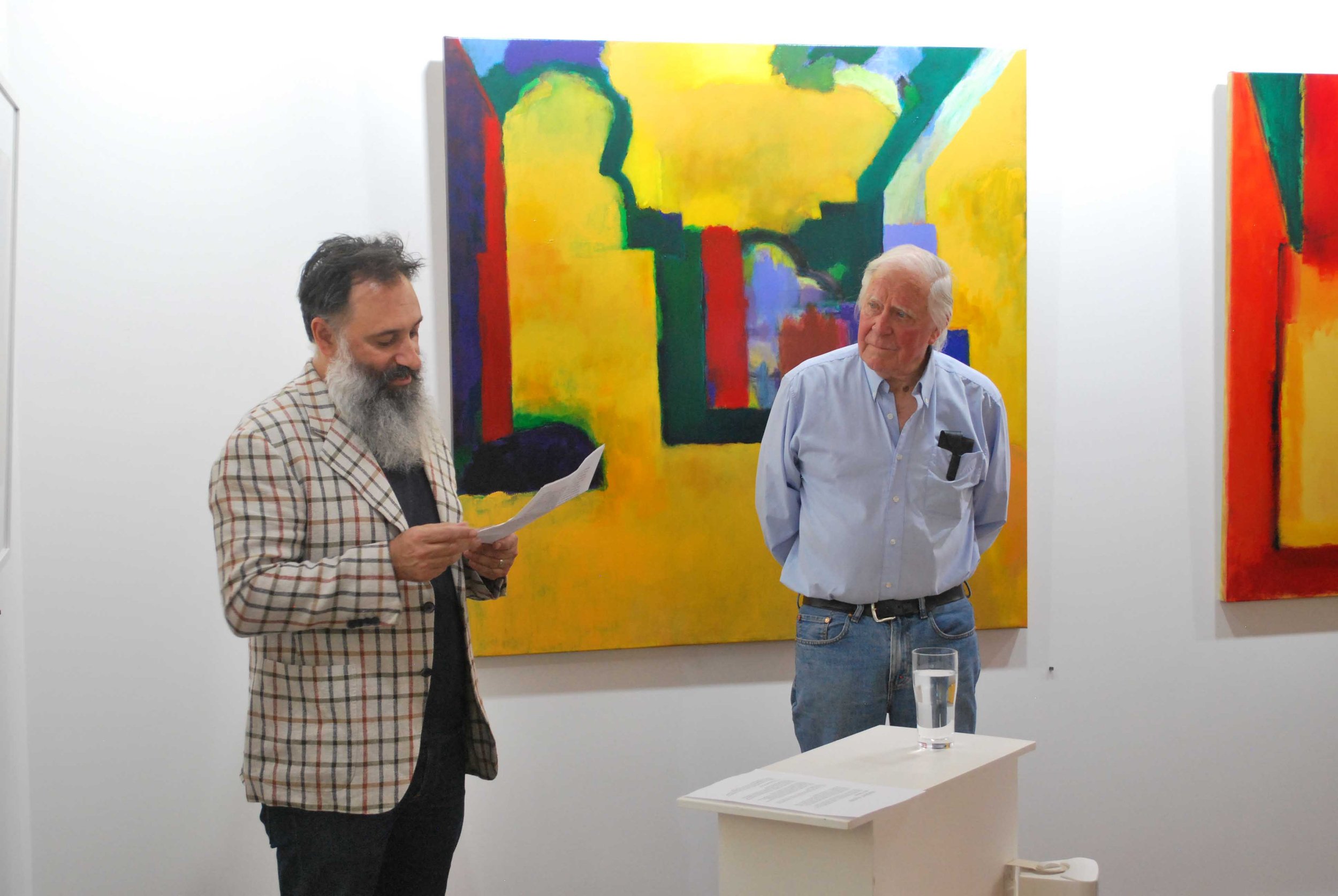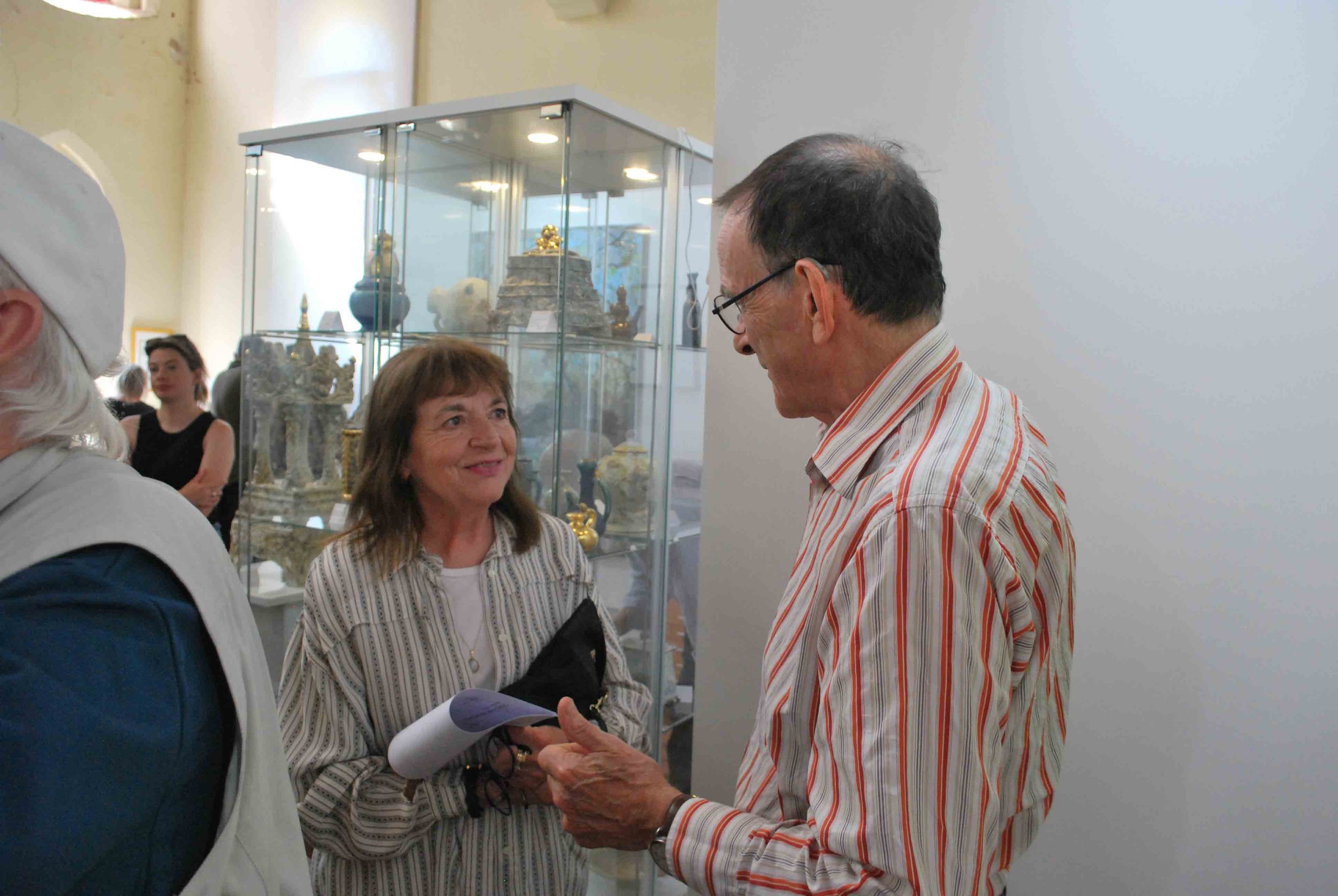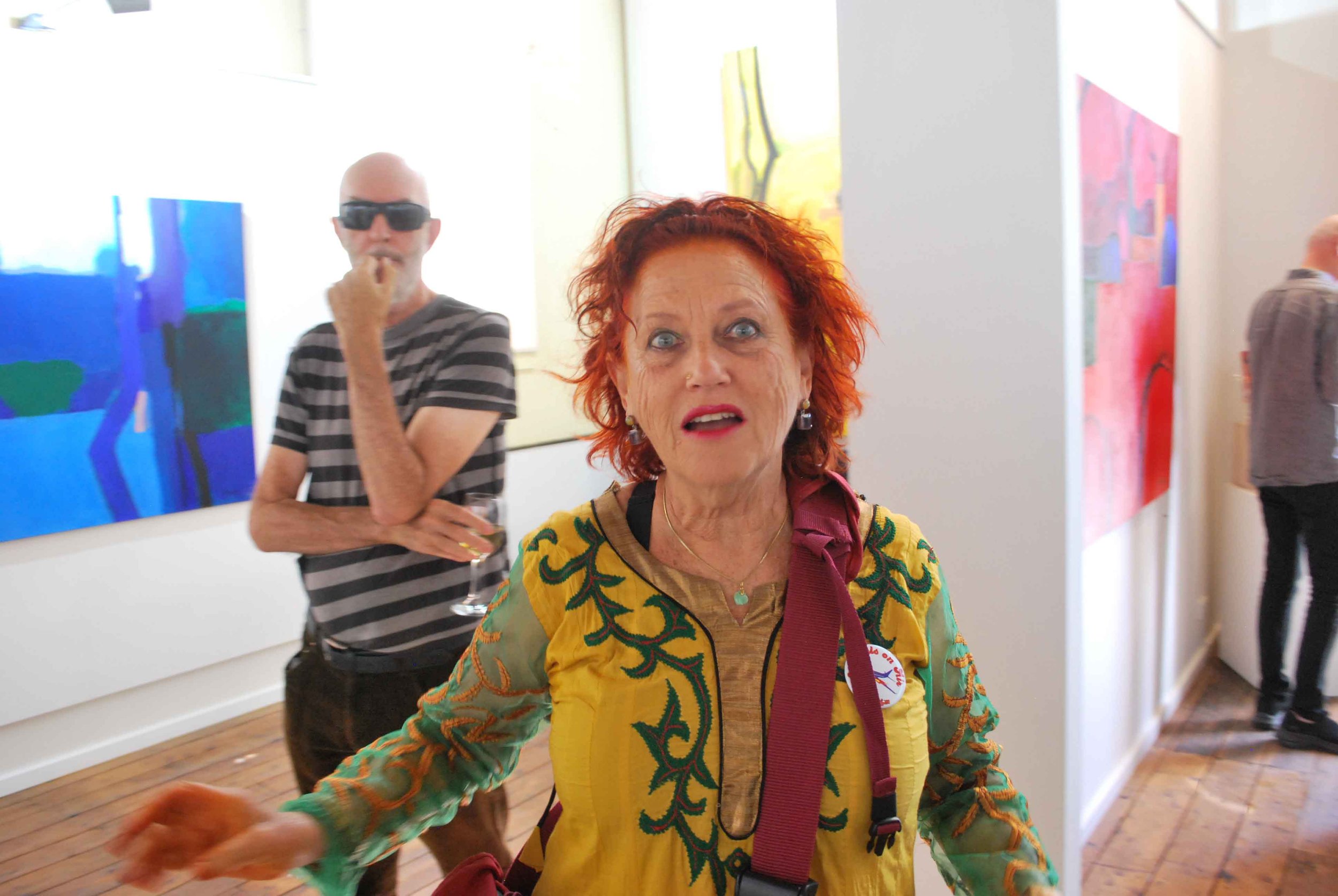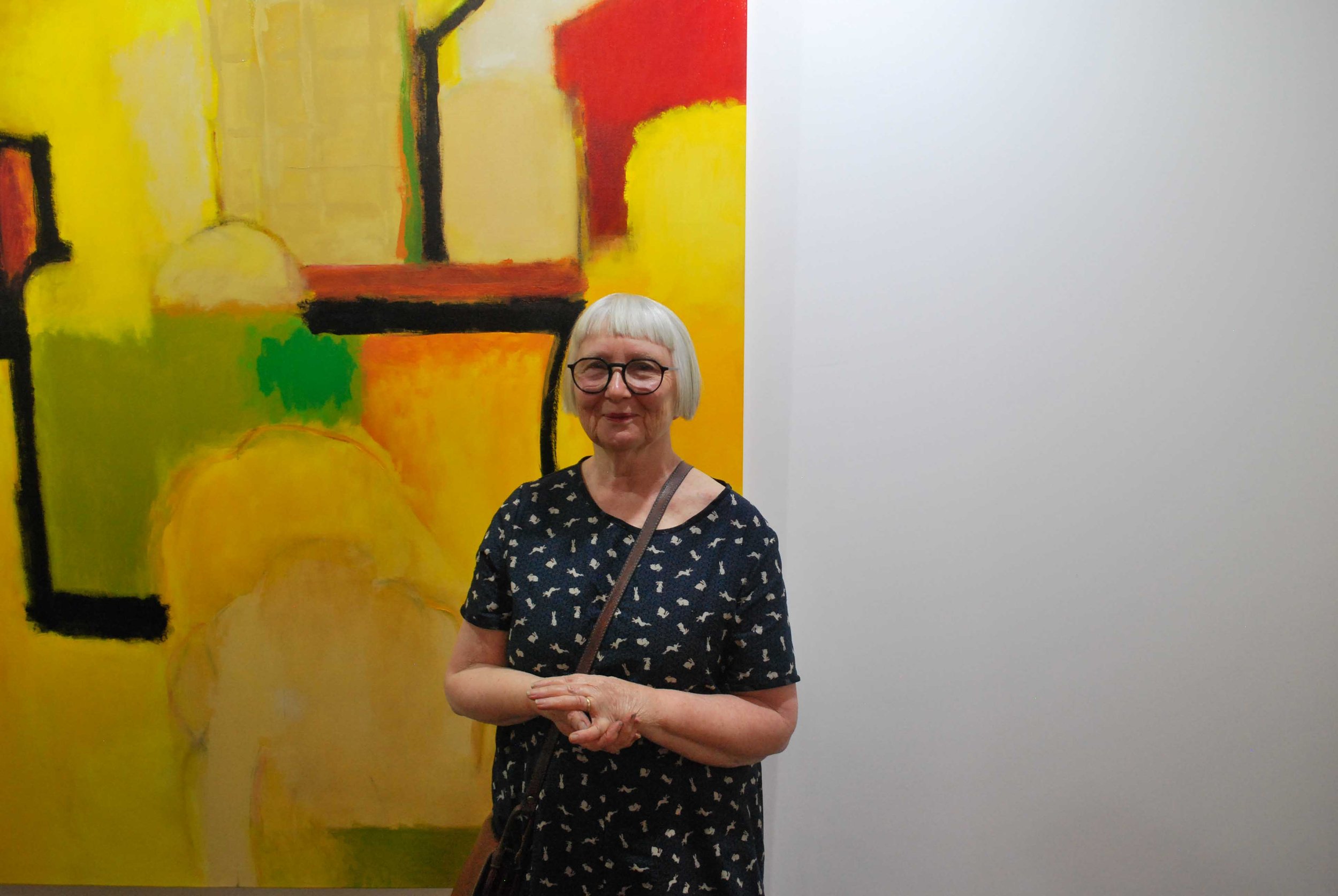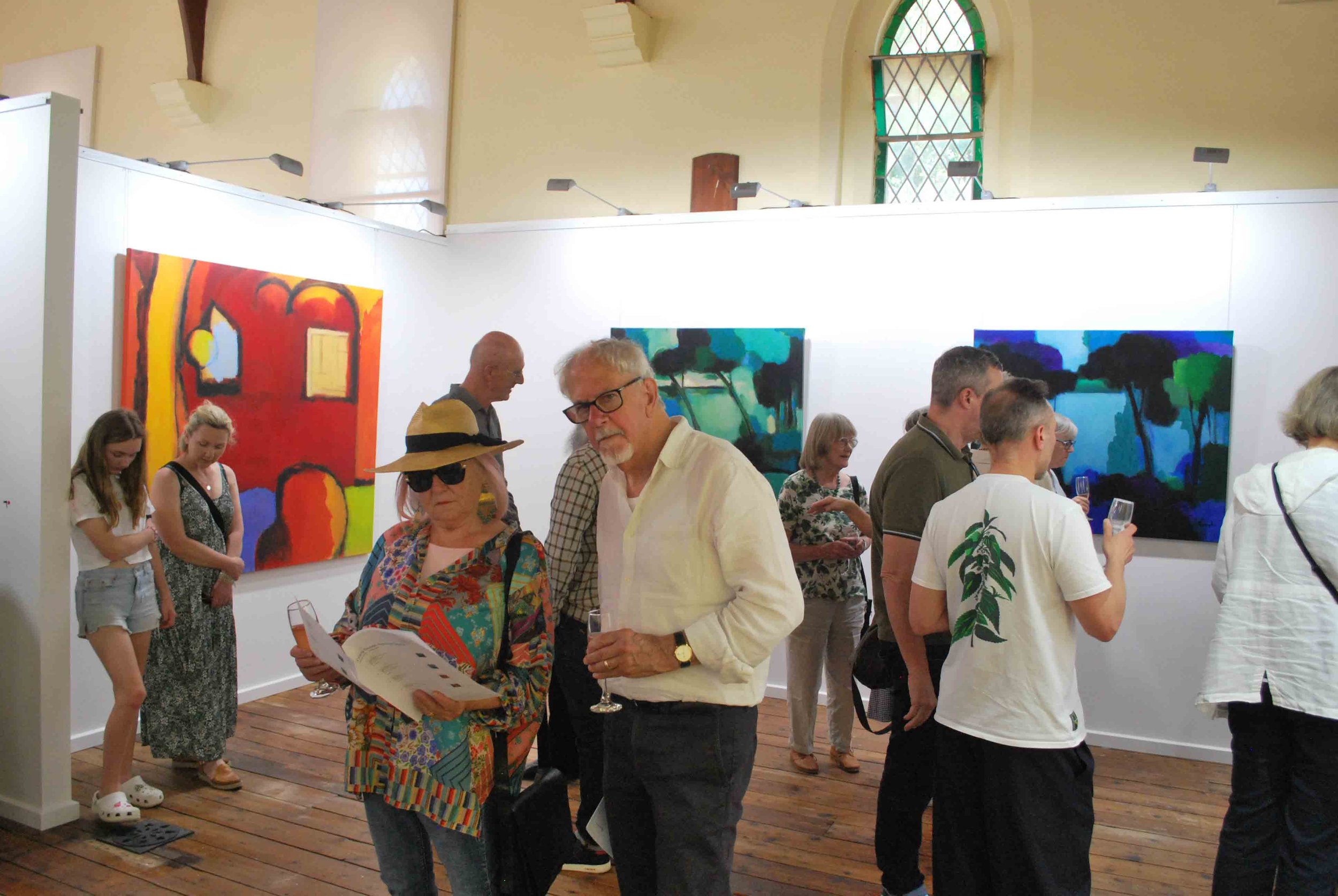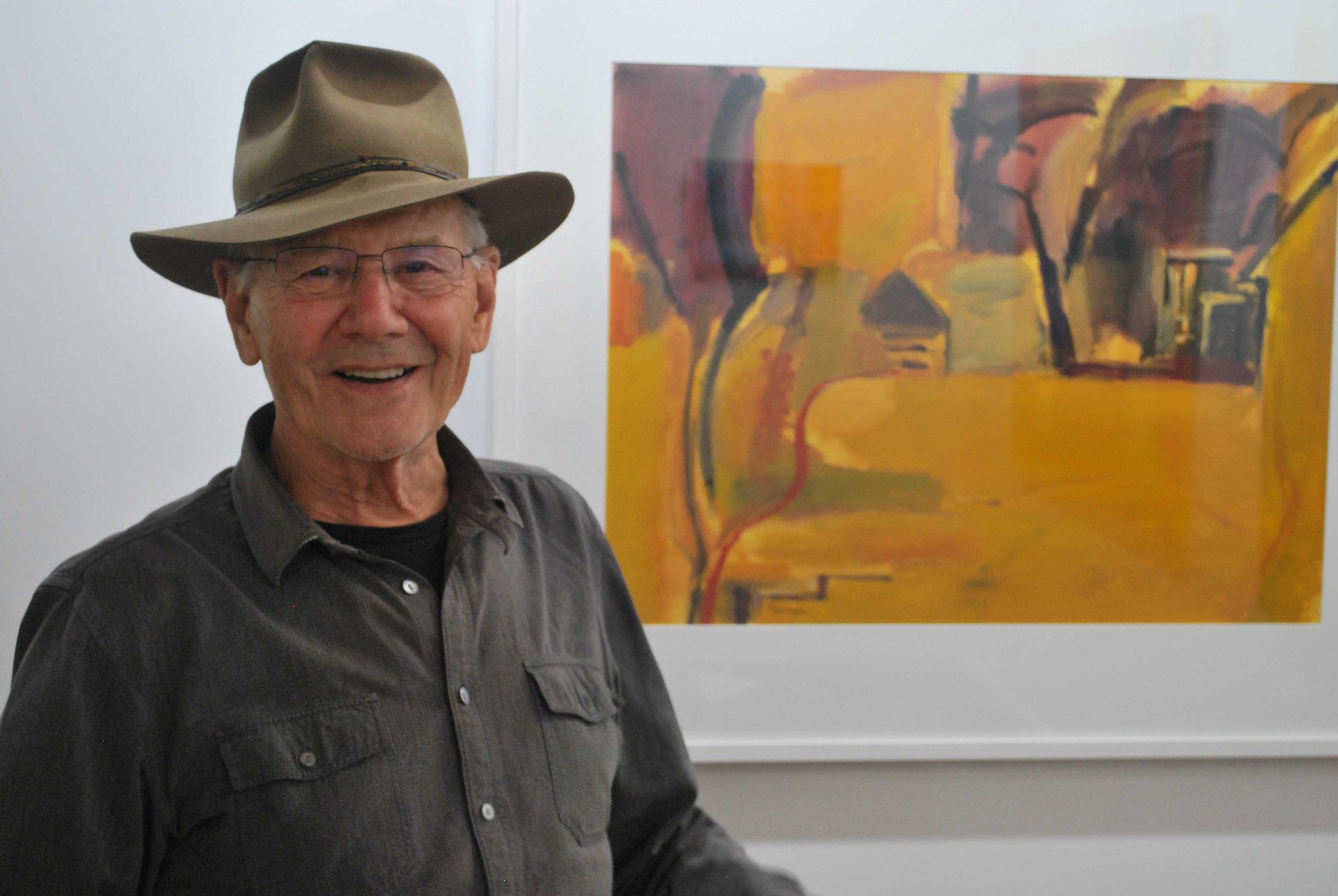Exhibition: Craig Gough
Craig Gough opening – 30 March 2024
Speech notes by Dr. Vincent Alessi
I would like to begin today by acknowledging the Traditional Owners of the lands on which we meet today, the Dja Dja Wurrung people, who have been custodians of the land and waters for many centuries, and continue to perform age old ceremonies of celebration, initiation and renewal. I acknowledge the vital role the local Djaara people have played and continue to play as custodians of the region and pay my respect to their elders, past, present and emerging.
I also acknowledge other First Nations people who are with us today.
Today is a perfect day to be opening Craig’s exhibition. We are graced with beautiful clear skies, bathed in sunshine. It is in this type of atmosphere where the world around us pops with colour, where things seem to have greater clarity, freshness and a seductive and welcoming aspect. It is also appropriate that we are standing in what was once a church. If there is one thing that the architects of churches understood, it was light, particularly sunlight. It is on days like today, that stained glass windows become LED screens, intense in colour, with a capacity to alter the interior space. I would describe myself as a long time lapsed Catholic. However, I have been tempted, only once, to re-join the flock. And that was standing under the great archers of Antonio Gaudi’s Sagrada Familia in Barcelona where his use of stained glass and light was so transformative that it beset with tears. One side of the cathedral was bathed in warm yellows and reds, and the other in green and blue, merging in the middle in a serene pure white glow. In this solitary act, Gaudi captured the celestial and the terrestrial, the physical and the ethereal. Looking at Craig’s paintings, reminds me of the power that colour can have on us.
So, when thinking of what to say today, to try and capture in a succinct manner, Craig’s work, particularly this body of work before us, I found myself drawing a Ven diagram. It was structured around three key ideas: looking, colour, and paintings. The three elements which I feel best get us close to Craig’s practice.
Now as an art historian and curator, I have a penchant for looking back as much as looking forward to make sense of artistic practice. This is not about saying artist x looks like artist y, but instead, it’s about trying to make sense of the conversations artists have by themselves, in the studio with other artists, peers and historical figures alike. Now I am making assumptions about the conversations Craig is having in the studio; the artists he is looking at, that inform his work and ideas, that he is bouncing off, learning from, adding to, challenging. So, Craig, if I stray to someone that you would never have a chat with around the dining table, I apologise now.
LOOKING
When I think about the act of looking, its importance, particularly in the context of artists, I find myself time and time again return to David Hockney. In his conversations with long-time friend and Hockney expert, Martin Gayford, Hockney stated:
I’ve come to think that most people just scan the ground in front of them. As long as it’s clear and they can move forward, they don’t bother about anything more. Looking is a very positive act. You have to do it deliberately.
The moment you see something and then you see it differently – that’s when you know you’re really seeing.
The title of one of the paintings in this exhibition is Portal. This is so apt for all of these works. A portal is something we look through, which has the capacity to focus our vision on a defined view. This is what Craig does. Craig has mentioned in an interview that he doesn’t have to go far to find a subject to explore. He has the garden and surrounding landscape of his and Wendy’s home that continues to provide content. However, this subject is not something that Craig simply reproduces, that is essentially what a camera can do. It is the subject from which Craig explores. He looks closely at the natural curves in nature, the formed lines of man-made objects, the relationship between the two, how light falls, changes and casts shadows. These elements come together in an exploration, not to depict that image of the site being studied, but rather to make a new something that is of but independent of that being viewed. And it is the aspect of Craig’s approach that makes his works special. For the audience, our role is to likewise look. Not for the vines wrapped around a veranda pole, but to study intimately, the relationships between colour, shape and how as a whole they become a symphony.
COLOR
It is at the core of Craig’s work. Looking at this body of work all I can say is colour oh great colour. From studies in red to green, yellow to blue, these are paintings that are constantly searching, being made and remade, to create objects of gem-like resonance and beauty.
In 1890 the art critic Albert Aurier, penned these words:
Beneath skies that sometimes dazzle like faceted sapphires or turquoises., that sometimes are molded of infernal, hot, noxious, and blinding sulfurs; beneath skies like streams of molten metals and crystals, which, at times, expose radiating, torrid solar disks; beneath the incessant and formidable streaming of every conceivable effect of light, in heavy, flaming, burning atmospheres that seem to be exhaled from fantastic furnaces where gold and diamonds and similar gems are volatilized--there is the disquieting and disturbing display of a strange nature, that is at once entirely realistic, and yet almost supernatural, of an excessive nature where everything--beings and things, shadows and lights, forms and colours--rears and rises up with a raging will to howl its own essential song in the most intense and fiercely high-pitched timbre:
This could have been written about Craig’s work. It was, though, the first ever review of the work of Vincent van Gogh, universally known for the intensity and purity of his palette. Craig, while not necessarily employing the same thick encrusted impasto technique of van Gogh, does share with him the belief in the power of colour, how it can both capture a place and object and move the audience in different ways. Craig explores colour and the juxtaposition of, in a way that is synonymous with music. He has mentioned the parallel with jazz in the past, stating “For me, improvisation in painting is a lot like jazz. You have a group of chords that have a particular sequence and there are special rhythms, and you need to improvise, to come up with a coherence of the idea that produces a special unity, even though you take a lot of liberties.” It is an idea shared and argued for by others, including Kandinsky, who famously wrote, “Colour is the keyboard, the hammers are the eyes, the soul is the piano with many strings. The artist is the hand that plays, touching one key or another purposefully, to cause vibrations in the soul.” It is not a stretch to say that Craig is an equal of Kandinsky in his understanding and approach to colour.
PAINTINGS
Craig has stated in an interview “I would hope that the works have a special identity as a picture – a painting – and not just an object.” In essence, he is asking us to look at the painting, the act of painting. For me this suggests, to not try and find aspects of reality – oh there is a hill, a door, a window etc – but to go deeper. To look at the composition, the choices of colour, how one interacts with the other, that as a painting it speaks to ideas and concepts, to our soul. When we take this approach, we are looking more closely, not to find something, but to feel something and to engage with ideas that have informed the artist’s work. Peter Tyndall has named all his works throughout his career detail A Person Looks At A Work Of Art/ someone looks at something … LOGOS/ HA HA as an acknowledgement that the audience finishes the work conceptually, by looking intently. It is something that Craig asks us to do also.
In an interview in 2020 Craig said “I seem to have been painting the same picture over and over again, trying to find something else to say about it. I’m still excited by what I am doing.” It is testament to Craig’s dedication and career, which is into its sixth decade. He remains curious, vital and important. He is one of this country’s great abstract painters, painters in general, and the least we owe him is to keep looking, intently.
Congratulations Craig. May you keep making that same painting for a long time to come.
Opening Night
